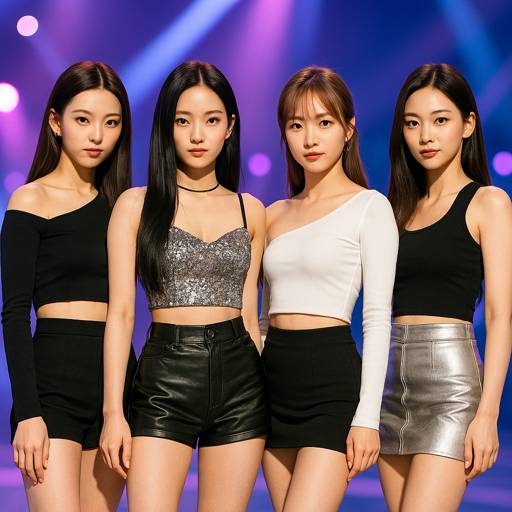Introduction: The Nation’s Girl Group
Before BLACKPINK broke YouTube records, there was Girls’ Generation (소녀시대). They were the original blueprint for global K-pop girl groups. Girls’ Generation debuted under SM Entertainment in 2007. They redefined what it meant to be a girl group in South Korea. They left an indelible mark not just on K-pop but also on the global music industry as a whole.
Girls’ Generation is known in Korea as “국민 걸그룹 (The Nation’s Girl Group).” They have delivered hit after hit. They have inspired countless successors. They have remained culturally relevant for more than a decade. This is a feat few pop acts, anywhere in the world, have achieved.
Members of Girls’ Generation
Originally a 9-member group, Girls’ Generation consists of:
- Taeyeon – Main vocalist, soloist, known for her emotional vocal tone
- Sunny – Sub-vocalist, variety show expert
- Tiffany Young – Lead vocalist, American-born, active as a solo artist in the U.S.
- Hyoyeon – Main dancer and DJ
- Yuri – Lead dancer and actress
- Sooyoung – Lead rapper and prominent actress
- Yoona – Visual, center, one of Korea’s top actresses
- Seohyun – Maknae (youngest), main vocalist and musical actress
- Jessica (former member, left in 2014)
Each member brings distinct talents, enabling the group to explore a variety of music genres, concepts, and media platforms.
Debut and Breakthrough: From “Into the New World” to “Gee”
Girls’ Generation debuted in August 2007 with “Into the New World.” It was a powerful anthem. Although it was not a chart-topper at first, it later became a symbol of youth, activism, and feminist solidarity.
Their true breakthrough came with “Gee” (2009) — a bubbly, catchy hit that:
- Topped Korean music charts for a record-breaking 9 consecutive weeks
- Was named “Song of the Decade” by Melon
- Introduced their signature “crab leg dance” and bright fashion trend
Following this, songs like “Genie,” “Oh!,” “Run Devil Run,” and “Hoot” solidified their position at the top of K-pop’s golden era (2008–2012).
Musical Evolution and Global Expansion
1. Sound Growth
Girls’ Generation didn’t stay in the “cute and bright” box. With “The Boys” (2011), they moved toward a more mature, powerful image, incorporating Western pop elements. The song was released in both Korean and English, and marked their attempt at U.S. crossover success.
They continued evolving with:
- “I Got A Boy” – A genre-defying hit blending EDM, trap, and pop
- “Mr.Mr.” – Sleek, electronic R&B
- “Lion Heart” – Retro-inspired pop with colorful visuals
- “FOREVER 1” (2022) – Their long-awaited 15th anniversary comeback, blending nostalgia and new energy
2. Japan and Beyond
Girls’ Generation was among the first K-pop groups to successfully break into the Japanese market, with hits like:
- “GENIE” (Japanese ver.)
- “Paparazzi”
- “Galaxy Supernova”
They paved the way for other K-pop groups to pursue international careers. This was especially in Asia and early Hallyu markets like Taiwan, Hong Kong, and Singapore.
Cultural Impact and Legacy
1. Fashion and Trends
Girls’ Generation didn’t just follow trends; they set new ones. Their fashion influence ranged from skinny jeans and colored denim (Gee) to military chic (Genie). Their hairstyles, makeup, and outfits were widely copied by fans and celebrities alike.
2. Female Empowerment in K-Pop
Early K-pop often portrayed girl groups as either innocent or seductive. Girls’ Generation reclaimed femininity as strength. They showed that women could be cute, sexy, funny, and powerful — all at once.
Their lyrics often focused on self-respect, emotional honesty, and resilience, especially in tracks like:
- “Into the New World”
- “All Night”
- “FOREVER 1”
3. Variety and Versatility
Members excelled not only in music but also in:
- Acting (Yoona, Sooyoung, Seohyun)
- MC roles and variety (Sunny, Hyoyeon)
- Fashion and brand ambassadorship (Tiffany, Taeyeon)
This multi-platform presence made them household names — even among non-K-pop audiences.
Awards and Records
- Daesangs (Grand Prizes) at Golden Disc, Seoul Music Awards
- MTV Video Music Awards Japan – Best Pop Video
- Forbes Korea Power Celebrity List – Multiple #1 rankings
- First girl group to win “Artist of the Year” at the Melon Music Awards
- Over 100 music show wins
Their influence continues to be cited by newer groups like TWICE, Red Velvet, NewJeans, and LE SSERAFIM.
Recent Activities and Future Outlook
In 2022, Girls’ Generation reunited for their 15th anniversary with the album “FOREVER 1.” The comeback included:
- A full-group stage on music shows after 5 years
- A retro pop title track that blended nostalgia with modern sound
- Strong fan engagement across platforms like TikTok, YouTube, and Instagram
Members are now pursuing solo careers in various industries. They have affirmed that Girls’ Generation is not over. It’s forever.
Final Thoughts: More Than a Girl Group, a Generation
Girls’ Generation did not just dominate an era — they defined it. Their blend of talent, visual appeal, relatable personalities, and musical evolution made them the gold standard for K-pop girl groups.
In a constantly shifting industry, their message remains timeless:
“Right now, it’s Girls’ Generation. In the future, it’s Girls’ Generation. Forever, it’s Girls’ Generation.”
